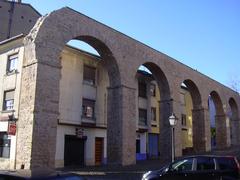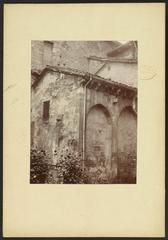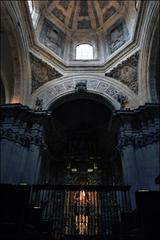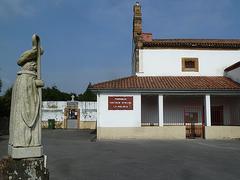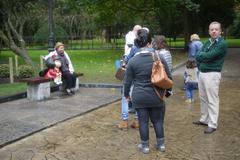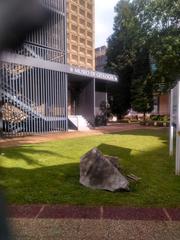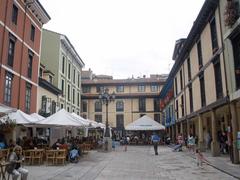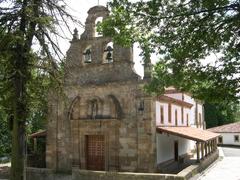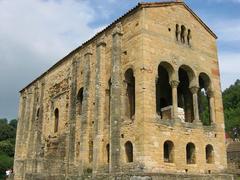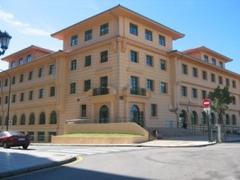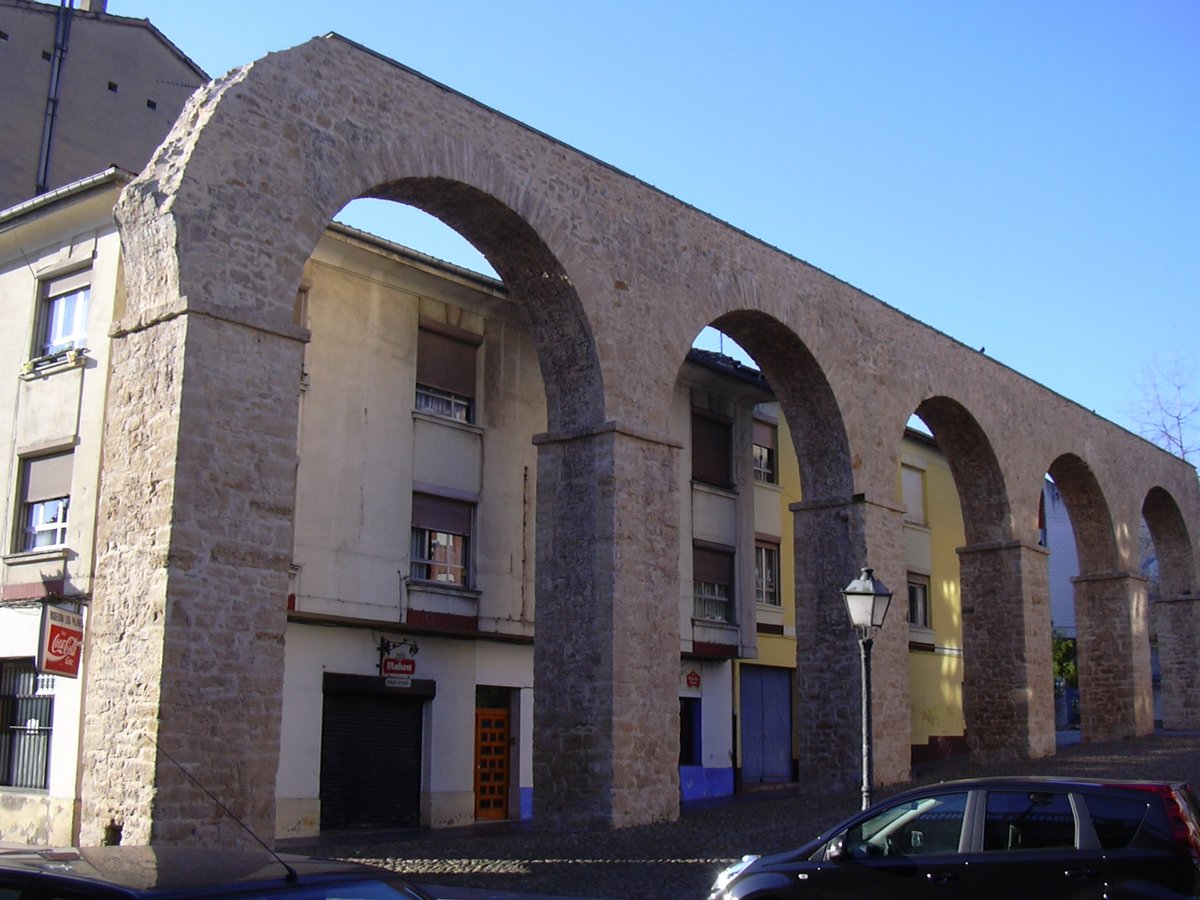
Comprehensive Guide to Visiting Acueducto de los Pilares, Oviedo City, Spain
Date: 23/07/2024
Introduction
Located in the heart of Oviedo, Spain, the Acueducto de los Pilares is a spectacular piece of Renaissance engineering and a significant historical landmark. Constructed between 1568 and 1599 under the reign of King Philip II, the aqueduct was designed to address the city’s water supply needs. Overseen by the renowned architect Juan de Cerecedo, also known as “El Mozo,” this structure not only ensured a reliable flow of water but also facilitated the urban development of Oviedo. Today, the Acueducto de los Pilares stands as a testament to ancient engineering skills and is a cherished cultural heritage site that draws visitors from around the world (Oviedo Tourism).
This comprehensive guide aims to provide everything you need to know about visiting the Acueducto de los Pilares. From its historical significance and architectural features to practical visitor information and travel tips, this guide is designed to help you make the most of your visit. Whether you are a history enthusiast, an architecture aficionado, or simply a curious traveler, understanding the rich context of this remarkable structure will enhance your experience.
Table of Contents
- Introduction
- Historical Background
- Architectural Features
- Cultural Relevance
- Visitor Tips
- Nearby Attractions
- Frequently Asked Questions (FAQ)
- Conclusion
Historical Background
Origins and Construction
The Acueducto de los Pilares, located in Oviedo, Spain, is a significant historical structure dating back to the 16th century. Constructed between 1568 and 1599, the aqueduct was commissioned by King Philip II to address the water supply needs of the city. The project was overseen by the renowned architect Juan de Cerecedo, also known as “El Mozo.” The aqueduct was designed to transport water from the nearby springs of Boo and Fitoria to the city center, ensuring a reliable water supply for the residents of Oviedo (Oviedo Tourism).
Role in Urban Development
The construction of the Acueducto de los Pilares played a crucial role in the urban development of Oviedo. Before its construction, the city faced significant challenges in accessing clean water, which hindered its growth and development. The aqueduct not only provided a steady water supply but also facilitated the expansion of the city by supporting new residential and commercial areas. This infrastructure project marked a turning point in Oviedo’s history, contributing to its transformation into a thriving urban center (Oviedo History).
Architectural Features
Design and Structure
The Acueducto de los Pilares is an impressive example of Renaissance engineering and architecture. The aqueduct spans approximately 3 kilometers and consists of 41 arches, each supported by robust pillars. The arches vary in height, with the tallest reaching up to 10 meters. The structure is primarily built from locally sourced limestone, which was chosen for its durability and resistance to weathering. The aqueduct’s design reflects the architectural principles of symmetry, proportion, and harmony, which were hallmarks of the Renaissance period (Architectural Digest).
Engineering Techniques
The construction of the Acueducto de los Pilares involved advanced engineering techniques for its time. The aqueduct features a series of channels and conduits that were meticulously designed to ensure a consistent flow of water. The gradient of the aqueduct was carefully calculated to maintain the water’s momentum without causing overflow or stagnation. Additionally, the structure includes several inspection points and maintenance access areas, allowing for regular upkeep and repairs. These engineering innovations highlight the ingenuity and skill of the architects and builders involved in the project (Engineering Heritage).
Cultural Relevance
Symbol of Heritage
The Acueducto de los Pilares is more than just a functional structure; it is a symbol of Oviedo’s rich cultural heritage. The aqueduct stands as a testament to the city’s historical significance and its contributions to engineering and architecture. It is a prominent landmark that attracts both locals and tourists, serving as a reminder of Oviedo’s past and its enduring legacy. The aqueduct is often featured in cultural events, exhibitions, and educational programs, highlighting its importance in the collective memory of the community (Cultural Oviedo).
Influence on Local Art and Literature
The Acueducto de los Pilares has also inspired local art and literature. Numerous artists have captured the aqueduct’s grandeur in paintings, drawings, and photographs, showcasing its architectural beauty and historical significance. Additionally, the aqueduct has been referenced in various literary works, including poems, novels, and historical accounts. These artistic and literary representations contribute to the cultural identity of Oviedo, reinforcing the aqueduct’s status as a cherished landmark (Art and Literature).
Visitor Tips
Visiting Hours and Tickets
The Acueducto de los Pilares is open to visitors year-round, with visiting hours typically from 9:00 AM to 6:00 PM. Admission is free, but guided tours may have a fee. It’s best to check the official Oviedo Tourism website for the most up-to-date information on visiting hours and ticket prices.
Best Time to Visit
To fully appreciate the Acueducto de los Pilares, it is recommended to visit during the spring or autumn months. During these seasons, the weather is mild, and the surrounding landscape is particularly picturesque. Early morning or late afternoon visits are ideal, as the lighting conditions enhance the visual appeal of the aqueduct and provide excellent opportunities for photography (Travel Tips).
Guided Tours and Accessibility
For a comprehensive understanding of the aqueduct’s history and significance, guided tours are available. These tours are led by knowledgeable guides who provide in-depth information about the structure’s construction, architectural features, and cultural relevance. The tours typically last around 1-2 hours and include access to areas that are not open to the general public. Additionally, the site is accessible to visitors with mobility challenges, with designated pathways and viewing platforms ensuring an inclusive experience for all (Guided Tours).
Nearby Attractions
Visitors to the Acueducto de los Pilares can also explore other nearby attractions in Oviedo. The city is home to several historical and cultural sites, including the Oviedo Cathedral, the Archaeological Museum of Asturias, and the San Miguel de Lillo Church. These attractions provide a deeper insight into the region’s history and heritage, making Oviedo a rich and rewarding destination for cultural tourism (Oviedo Attractions).
Frequently Asked Questions (FAQ)
Q: What are the visiting hours for the Acueducto de los Pilares? A: The aqueduct is typically open from 9:00 AM to 6:00 PM. Check the Oviedo Tourism website for the latest information.
Q: Is there an admission fee for the Acueducto de los Pilares? A: Admission is free, but guided tours may have a fee.
Q: When is the best time to visit the Acueducto de los Pilares? A: The best time to visit is during the spring or autumn months when the weather is mild and the landscape is picturesque.
Q: Are there guided tours available? A: Yes, guided tours are available and provide in-depth information about the aqueduct.
Q: Is the Acueducto de los Pilares accessible to visitors with mobility challenges? A: Yes, the site has designated pathways and viewing platforms to ensure accessibility.
Conclusion
The Acueducto de los Pilares in Oviedo is more than just an ancient structure; it is a symbol of the city’s rich cultural heritage and a remarkable example of Renaissance engineering. By visiting this historical site, you not only get to witness the architectural prowess of a bygone era but also gain a deeper appreciation for Oviedo’s historical development and cultural significance. The aqueduct’s impressive design, coupled with its role in the city’s urban expansion, makes it a must-visit landmark.
This guide has provided a thorough overview of the Acueducto de los Pilares, covering everything from its historical background and architectural features to practical visitor tips and nearby attractions. Whether you plan to explore the site on your own or join a guided tour, the insights shared here aim to enhance your visit. Remember to check the official tourism website for the latest updates on visiting hours and ticket prices (Oviedo Tourism). For more travel guides and updates, consider downloading the Audiala mobile app or following related posts on social media. Enjoy your journey through Oviedo and its historical wonders!
References
- Visiting Acueducto de los Pilares - History, Tickets, and Tips. (n.d.). Retrieved from Oviedo Tourism
- The Ultimate Guide to Visiting the Acueducto de los Pilares - History, Architecture, and Visitor Tips. (n.d.). Retrieved from Oviedo Tourism
- Complete Guide to Visiting Acueducto de los Pilares in Oviedo - History, Tickets, and Tips. (n.d.). Retrieved from Oviedo Tourism
